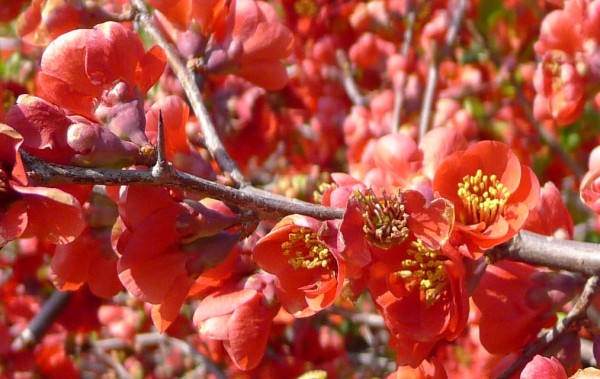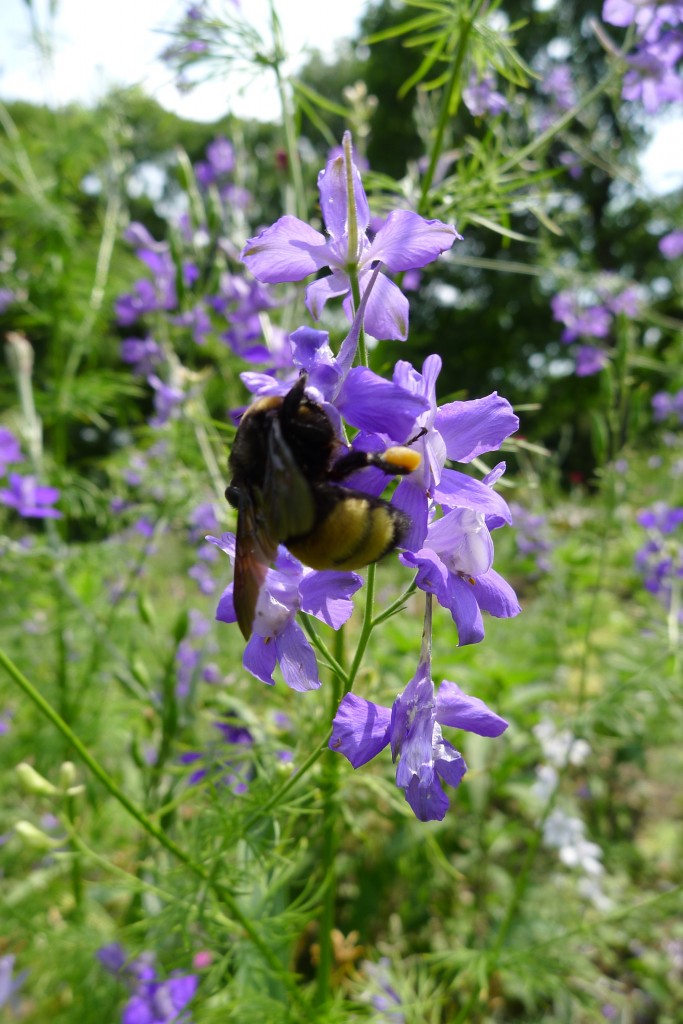
My garden adventures this spring began with a flowering quince and a single, fat, and hairy bumblebee. I watched that thing bounce around the air; too heavy for its wings, it seemed. The warm air carried sweet nectar and that bee, like his brothers, buzzed from one welcoming, wet flower to another. Yes, I know. Stop trying to sound a pornographic. To the point. It all got me thinking – with my brain, thank you – about the true story of the birds and the bees. Not what they do with each other but their seduction by that other mastermind – the one that with an alluring shape, enticing aroma, and soft, colorful skin, has a grip on our hearts as well – the flower.
Quinces have so many flowers on just a single plant. A big, bright candy store for bees, free for the taking. Sorta. They get a little sticky in the process – not always a bad thing – and end up carrying hundreds of tacky little candies with them to be dropped off at one of their next destinations. But really, why so many intense red flowers? Is it part of a plan, cooked up by the trial and error culinary style of evolution? As it turns out, that question has many answers.
First of all, that intense red color we love – totally invisible to a bee. Yup, bees don’t see the red part of the light spectrum, though they see ultraviolet, which we can’t. So this flowering quince is something of an anomaly in the bee pollinated plant world. One of human design, actually. Wild quinces have much lighter, pink flowers. That deep red is something cooked up, not by evolution alone, but with the helping hands of plant breeders.

Secondly, while the massive amount of flowers may have more to do with the mass production of fruit and seed, it has its influence on pollination as well. Bees, unlike many of us, listen to one another. When one of them finds a sweet source of nectar, they come back to command central and do a little dance to show the others how excited they are and where the goods can be found (this is actually true, they do communicate through dance – more on this some other time). To get noticed by all of these dancing bees, you have to be louder than the plants in other areas. And by louder, I mean have more – more flowers, more nectar. Evolution, then, creates something of an arms race among plants wanting to attract pollinators to their neighborhood. What a plant doesn’t necessarily want, though, is for a pollinator to go bouncing from one flower to another on the same plant with out ever bringing it’s genetic stuff to another one. This can have something of an opposite evolutionary force that might stop a plant short from overloading a hungry bee all by itself. The whole point, after all, is to use animals as a transit system for plants’ vital parts that, held in place as plants are, can’t be delivered personally. Plants have come up with some other solutions to this problem of impregnating themselves, however. One of these is to have only male or female flowers on any single plant. Brilliant right? No need to worry about knocking yourself up if you don’t have all the parts (Luckily we humans were blessed with this strategy too). Other plants are simply not compatible with themselves, this often being controlled by tiny proteins on the surface of a grain of pollen (the male part) and the style (the female parts).